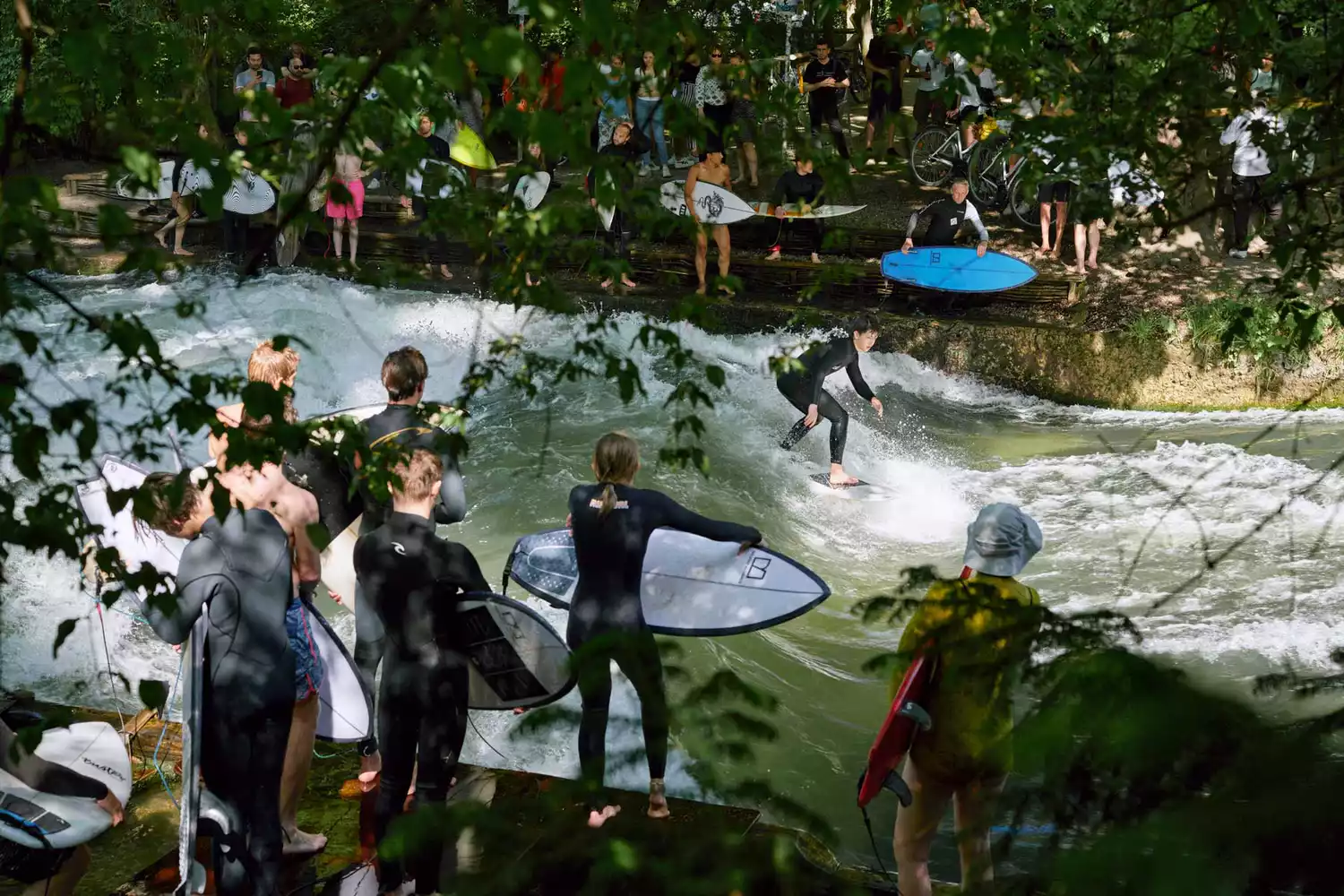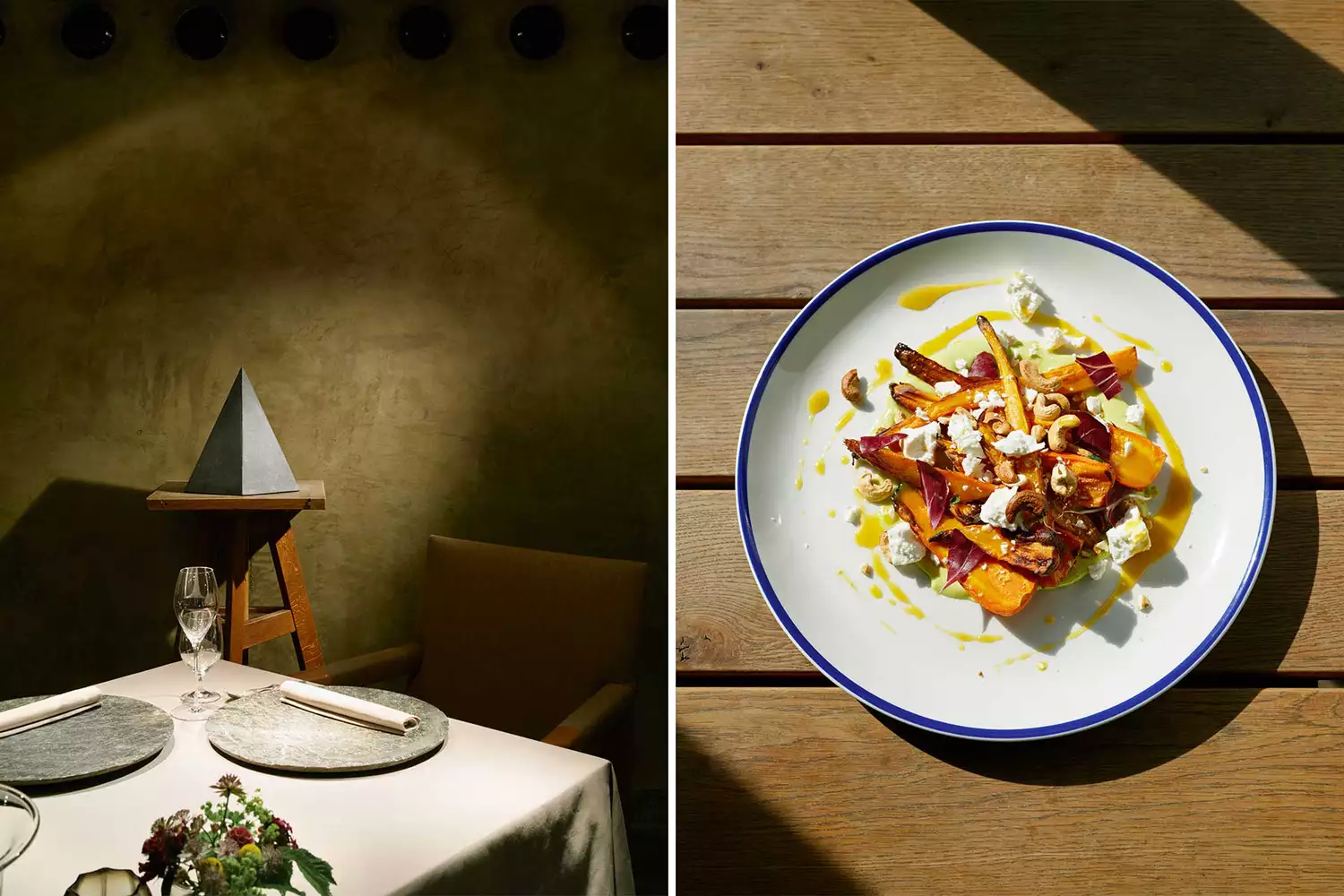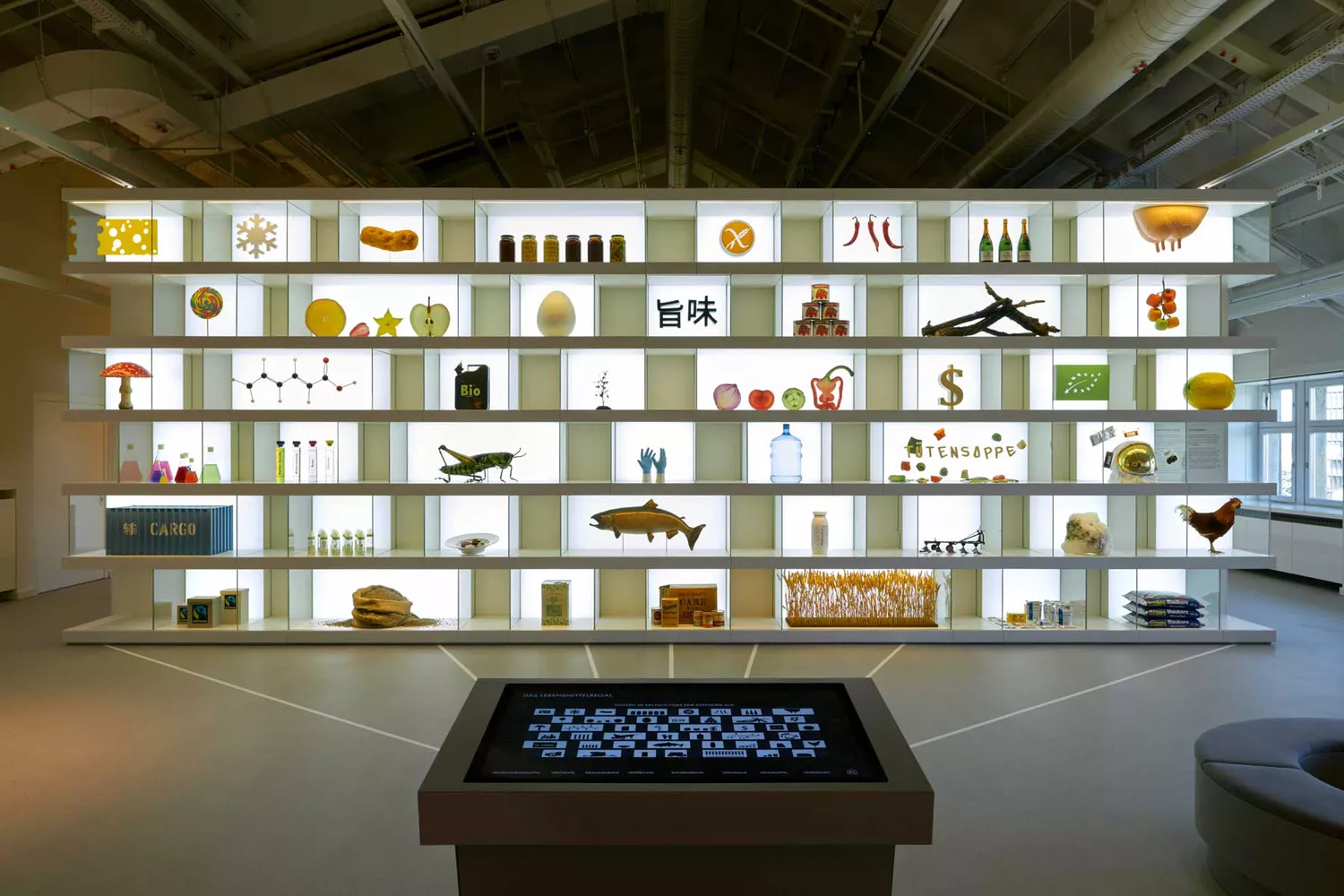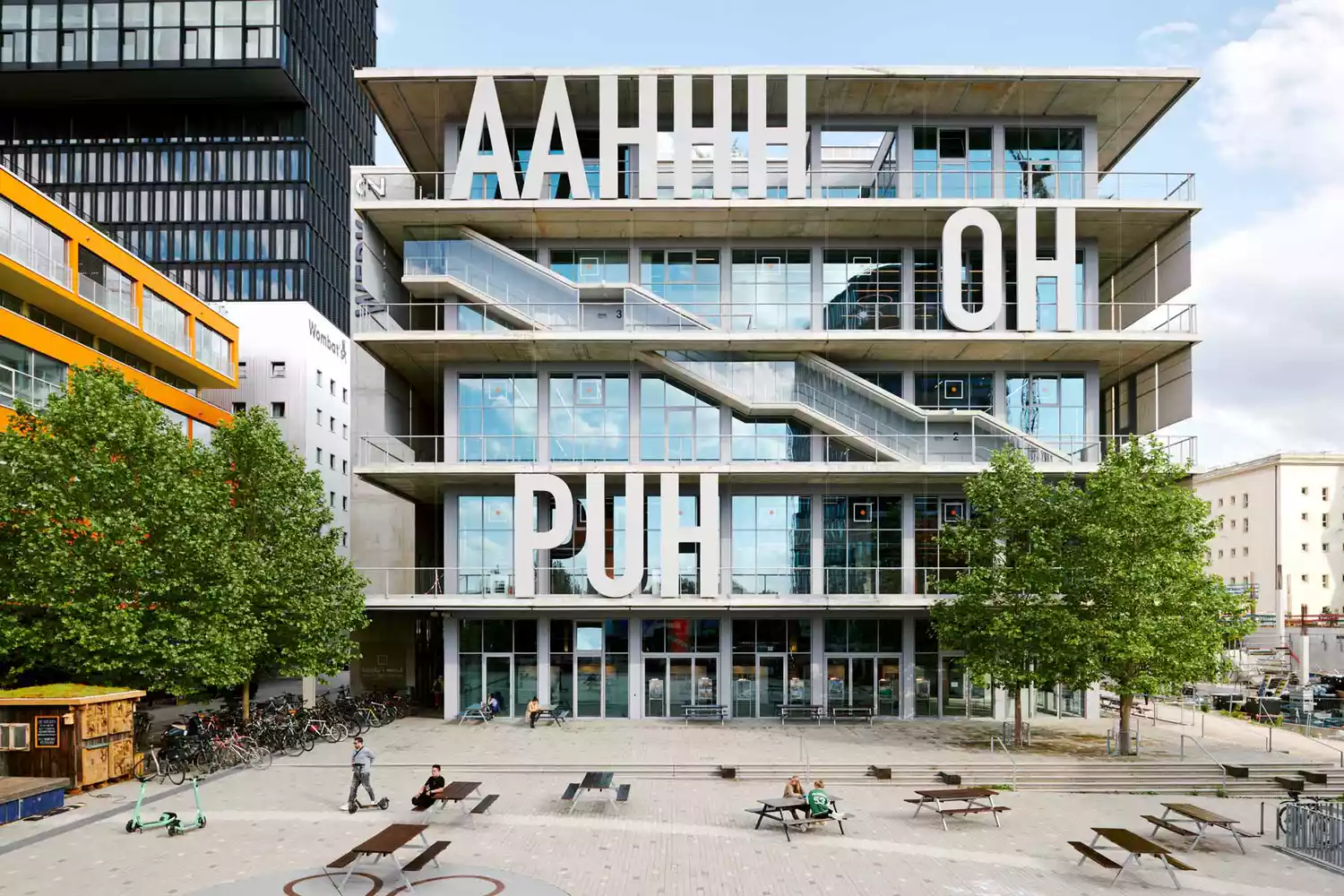Munich has developed into the European Silicon Valley thanks to its upscale new hotels, tech hubs, and innovative museums.
Munich's low skyline is dominated by the 323-foot-tall, copper-topped spires of the historic Frauenkirche cathedral, which are supposed to continue to be the city's tallest structures according to tradition. But when you look up from the street, the first thing you see is the building cranes. They are found throughout. Munich was officially founded on June 14, 1158, making it a medieval city. Munich, though, is quickly reinventing itself. Even if you've traveled this way previously (for instance, to attend a sudsy Oktoberfest), the area will be very different when you return.
Munich is one of the cities with the most visual clichés. It's impossible to unsee the cheerful guy in the leather shorts with the stupid feather on his foolish hat once you've seen him. Thank goodness he's still around and raising his silo-sized beer stein. Munich adheres steadfastly to Bavarian customs. But modern-day Munich is just as likely to be a scrawny young programmer in a hoodie who has relocated to this city to join the hectic startup environment.
"Laptops and lederhosen" was a hazy political pledge twenty years ago. It is now a brand. In 2013, an 80-person breakfast marked the beginning of the Bits and Pretzels startup conference. It has to set a limit of 5,000 attendees in 2017. President Obama appeared in 2019. Munich has become Apple's primary engineering hub in Europe. It invested $1.2 billion in a brand-new structure on Karlstrasse last year. These are just a couple of the numerous instances of how the future is sprouting in Munich's beer-soaked ground.
My first impression of Munich's rapid urban renewal had to be the brand-new Gasteig theatre and cultural complex, which had only opened a week before I arrived there in October. It was constructed to serve as the Munich Philharmonic Orchestra's temporary home while its former red-brick headquarters underwent a complete renovation.
The entry hall and library of the complex, also known as Gasteig HP8, are located in the transformer room of a former power plant. It's on an outside ring road, which makes it a little challenging to get to, but then much of the new Munich is moving outward. "We just hope you bring it back," said Kathrin Metzner, who works in marketing for the new Gasteig. Old concrete floors and air ducts were left exposed by the designers. Although it can be done brilliantly or poorly, the industrial style has kind of become a cliché in design. Here, it's executed flawlessly.
The working-class aesthetic fits perfectly with the attitude of the new Gasteig, which views elite culture as a regular neighbor. It shares space with numerous other commercial tenants, a Pilates studio, and a Reifenhandel, which is German for a tire-changing garage. We didn't want to tell them, "Culture is coming, you have to leave," Metzner recalled. "They were all afraid we were going to throw them out." When I strolled through, the Reifenhandler was going about his business, and I was told that he was even thinking about some sort of radials-and-Rachmaninoff package deal.
The Gasteig's pride and joy is the concert hall, which was constructed entirely of wood and covered with steel. The hall's sound was given to the acoustical maestro Yasuhisa Toyota (who has nothing to do with cars), who previously worked at the Walt Disney Concert Hall in Los Angeles, and received the majority of the development's low budget. During a dress rehearsal, I snuck in. Before the first guests came, the conductor and various musicians were giving the renovated auditorium one more test drive by standing up and moving around the chairs. I was fortunate enough to score a last-minute ticket for the show that night. Richard Strauss, a native of Munich, composed the rousing "A Hero's Life," and every note was audibly distinct despite the thunderous volume.
The distance back to the town center was considerable, but fortunately part of it was along the banks of the Isar River, which rushes past the city after beginning high in the Alps. Munich started working on repairing the Isar in 2000. Concrete was removed, riverbanks were smoothed, gravel beaches formed on islands next to swimming pools, and water quality was raised. Long-missing fish and birds have made a comeback to coexist in the river with Munich's summer skinny-dippers. The "Isar-Plan" took 11 years to finish, yet at the center of the city, it has left a picturesque woodland. My stroll from the Gasteig resembled a strenuous country hike.

The river is also the source of surfing, the most peculiar pastime in Munich. To lessen the ferocious current of the Eisbach, an Isar tributary with the moniker "ice brook," the city council sunk concrete blocks under a bridge across it in the 1970s. Local surfers began showing up overnight to enjoy the chilly waters after a strong standing wave formed there. It was still theoretically forbidden to surf in Eisbach until 2010, but when I walked by, people were lining the banks to watch about 20 courageous surfers in wet suits ride the liquid roller coaster. It is now a must-see site in Munich.
The majestic old Bayerischer Hof, which occupies a full side of the Promenadeplatz, would be the hotel equivalent of the leisure-loving burgher of Munich. It originated with King Ludwig I, who said that he would welcome a luxury hotel in Munich one day in 1839. Of course, he received one. Since 1897, the Volkhardt family has owned and operated it, with Innegrit Volkhardt, of the fourth generation, currently in charge.
Over the years, the hotel has grown into a maze-like complex with 337 rooms, 74 suites, 40 function rooms, and five restaurants. An establishment that has had to satisfy both Sigmund Freud and Michael Jackson should have flawless service (across the street, the statue of Renaissance composer Orlando di Lasso has been repurposed as an ad hoc shrine to Jackson since his death). And it is distinctly German. The newest James Bond film was only being shown as "Keine Zeit zu Sterben" at the hotel's opulent theatre, which disappointed me. According to the hotel staff, there weren't enough English speakers for "No Time to Die."
Even in this staunchly conservative bastion of Munich's high society, change is in the air. Axel Vervoordt, a design guru from Belgium, has been moving through the corridors for the past six years, bringing new life to a section of rooms here, a restaurant there, and most recently, a whole annex of conference rooms. The hotel's baroque bloat has been greatly reduced thanks to Vervoordt's innate minimalism and passion for rustic wood and simple shapes, which has given the establishment a contemporary vibe. To honor Vervoordt's Flemish heritage, some employees have started referring to it as the Fleischer Hof. They do so in a positive manner.
The Deutsches Museum sits at anchor on an island in the Isar not far from Hotel Bayerischer Hof; in a way, that is what it is or was: a mothballed dreadnought. It has expanded since it first opened in 1925 to become the largest science and technology museum in the world, with 270,000 square feet of biplanes and submarines, telescopes, and microchips (it was the first museum to receive a quantum processor in 2019 thanks to Google's Munich operation), as well as hundreds of wonderful, incredibly detailed dioramas (the museum employs 100 people just to make them).

The Wright Brothers' aircraft that hangs from the ceiling is the one they abandoned in 1909 after their designs were not successful in selling in Germany. The rest of Germany's fleet was destroyed by the Treaty of Versailles, leaving just the World War I U-boat; however, Oskar von Miller, the museum's beloved founder, petitioned the Allies to allow him to maintain one as a display.
Despite this, the museum building had descended into musty decay, serving as a sizable holding area for easily distracted schoolchildren. This is unacceptable. The museum closed down half of its displays in 2015 for extensive renovations, yet you wouldn't know it. When I arrived, the renovated half had just reopened, while the other half was about to close until 2025. In a diorama of ancient agriculture, everything sparkles, even the small sheaves of wheat beneath the miniature millstone. A minuscule proportion of the museum's 1.5 million annual visitors, I was told, are foreigners. What a loss.
The Haidhausen district, which lived in Munich's shadow for over a thousand years until being incorporated into the city proper in the middle of the nineteenth century, is located a few steps east of the museum. To make the bricks for the Frauenkirche, the locals excavated loam from the banks of the Isar.
Awful devils. The suburb of broken glass known in German as glasserbenviertel, Haidhausen served as Munich's version of skid row for generations. Many people lived hard, short lives, and houses were small and unsanitary. Today, no glass has been broken. Haidhausen was rebuilt by the city in the 1980s, and it has since evolved into one of Munich's most fashionable neighborhoods. If you can find one, a little house that resembles a rural cottage with flowers on the windowsills might sell for millions of dollars.

Additionally vibrant is the local dining scene. I went inside a store on Pariser Strasse, also known as Paris Street, which is one of many French street names in Haidhausen's so-called French Quarter. The store's name is Spezlwirtschaft Haidhausen. Don't be fooled, though; Spezlwirtschaft serves what has come to be known as "nouveau Bavarian cuisine." This is not Munich's version of nouvelle cuisine, which is characterized by its lighter ingredients, smaller servings, and overall deprivation-minded attitude. The no-holds-barred pleasure philosophy that Munich lives by is still present in modern Bavarian cuisine, which promotes fresh local ingredients and is frequently presented in spaces with quirky décor.
Exhibit A is the potato soup, a typically amiable Bavarian classic, which Spezlwirtschaft transforms into a murderous flavor cannon by adding truffles and who knows what else. Although it's listed as a starter, it belonged as a finisher. After that, there was no need to keep eating.
Across the railroad tracks from Haidhausen is an industrial area where you may experience the true strength of the potato in Munich. Following World War II, the Eckart family made their wealth thereby processing tonnes of potatoes into Pfanni-brand mashed potato flakes.
Even though they no longer produce Pfanni flakes there, the Eckart's still control the entire parcel of land, which they are developing into Munich's newest neighborhood. The enlightened urban experiment of Eckart is called Werksviertel-Mitte. It's a fantastic mash-up of startup incubators, international food stalls, affordable housing (which Munich desperately needs), performance spaces, artist studios, boutique hotels, and anything else you could need in the futuristic urban utopia. A new auditorium complex was also recently approved according to a proposal. In the future, it will serve as the Bavarian Radio Symphony Orchestra's home.

Although it violates the Frauenkirchen height restriction, the new Adina hotel in Werksviertel, which is located above a massive silo for potato flour and has 16 stories, is far distant and also has some of the nicest views in Munich.
Apartment hotels like The Adina are designed for both short-term and long-term stays (all those migrant techies need someplace to sleep). My studio had a direct view of Werk3, the district's tallest building. A herd of fluffy sheep was quietly grazing outside a wood Tyrolean cottage just beyond my window. For you, that is Werksviertel. Daniel Wiechmann informed me, "In ten years, this will be the standard for how you wish to live." Wiechmann might say that since he works for the Eckart Foundation, but that doesn't make him right.
BMW, commonly known as Bavarian Motor Works, is based in Munich and wants everyone to know it. In satellite photographs on Google Earth, the 130-foot-diameter BMW emblem is discernible. A lot of well-known companies like to glorify themselves in steel and concrete, but the futuristic BMW complex next to Munich's Olympic Park is tough to surpass. Even if, like me, you never really caught the driving bug, it's still a blast.
A sort of automotive Guggenheim, the bowl-shaped BMW Museum underwent a comprehensive renovation in 2008 and features ramps that flow down through the model years. You may peruse the latest models at BMW Welt, sometimes known as BMW World, across the street, and either buy one or just drool subtly. Essentially, it's a huge auto dealership, but it houses the Mount Olympus dealership (ask yourself how many others have a restaurant with two Michelin stars).

The fastest, most sought-after, and most extravagant cars in the world are offered for sale at Munich Motorworld, a private dealer complex located across the street. There are 112 glass boxes surrounding the floor, each containing a hot automobile. Three of the hotel's studios at an Ameron hotel that is physically connected to Motorworld allow visitors to park their cars next to their rooms and keep them in view through a glass window. I was content to leave my small Mazda in the garage because I loved it. Instead, I lusciously regarded a fiery red Mustang and the cobalt-blue Nissan from the Fast and Furious films.
The sound of an automobile engine revving can be heard when you press the elevator's floor-specific button. Depending on how you look at it, you might find that stupid or kind of cool. For myself, I chose kind of cool.
Places to Stay
In a 24-story building in the Werksviertel-Mitte neighborhood, the Adina Apartment Hotel Munich offers studio apartments that are perfect for extended visits.
You don't want to be separated from your car, Ameron München Motorworld? This motel offers conventional rooms in addition to three studios with glass booths for parking.
Even though this magnificent dame in the heart of the city opened its doors in 1841, Axel Vervoordt-designed interiors and a theatre have been added.
Places to Eat
The French Quarter of Munich's Spezlwirtschaft Haidhausen serves meals including crispy roast pork and potato dumplings with a dark-beer sauce.
Steps to Take
BMW Welt: This cutting-edge vehicle dealership houses the BMW Museum and EssZimmer, a restaurant with two Michelin stars.
The largest technology museum in the world, the Deutsches Museum, features a wide range of interactive displays for children that cover everything from atomic physics to aeronautics.
Gasteig HP8: This performing arts venue and cultural hub are where you should go to hear chamber music and the philharmonic because of its excellent acoustics.
Munich Motorworld is a large steel building that houses the finest examples of the most desirable automobile brands in the world, from million-dollar Singer Porches to the newest Maseratis.
Previously an industrial district with abandoned arcades and discos, Werksviertel-Mitte is now a trendy development with flats, stores, and food stands.

